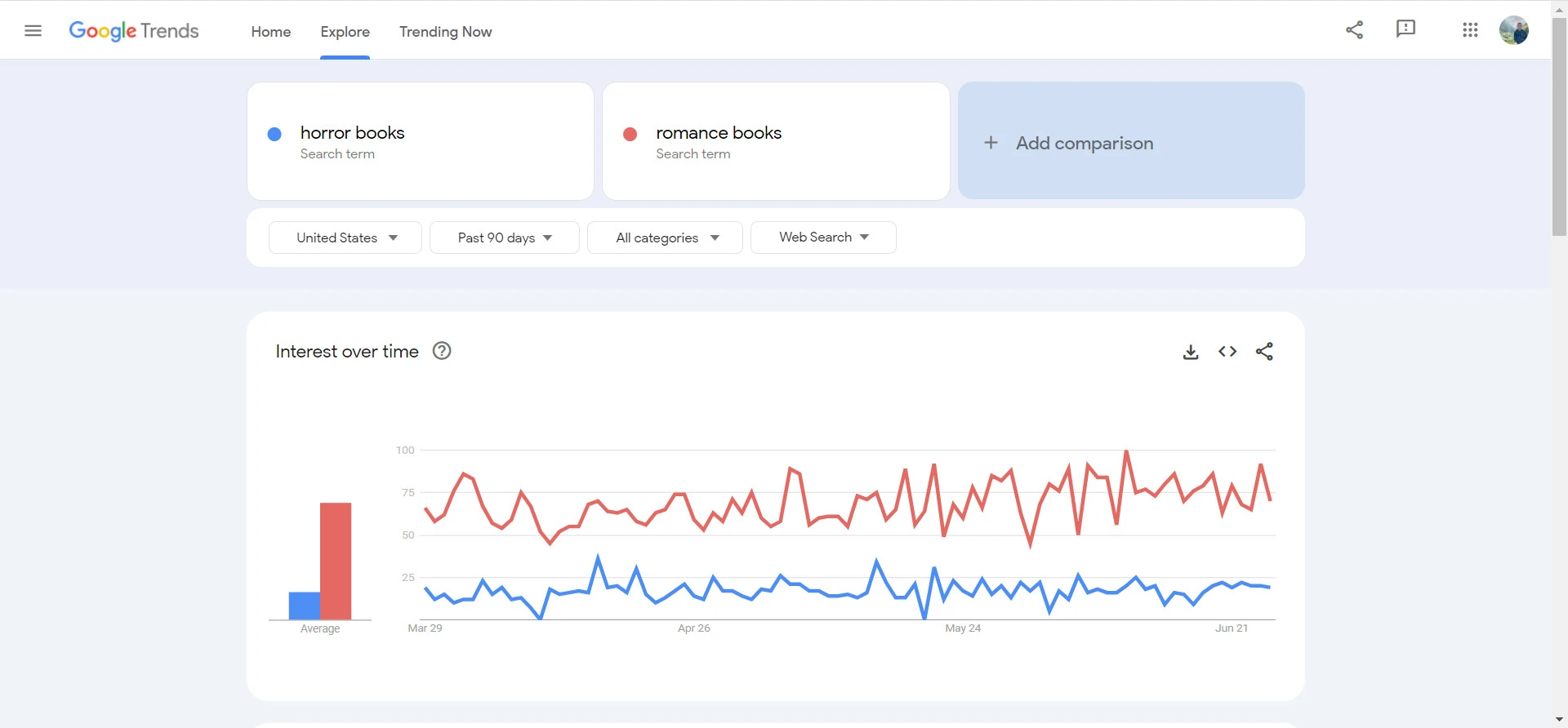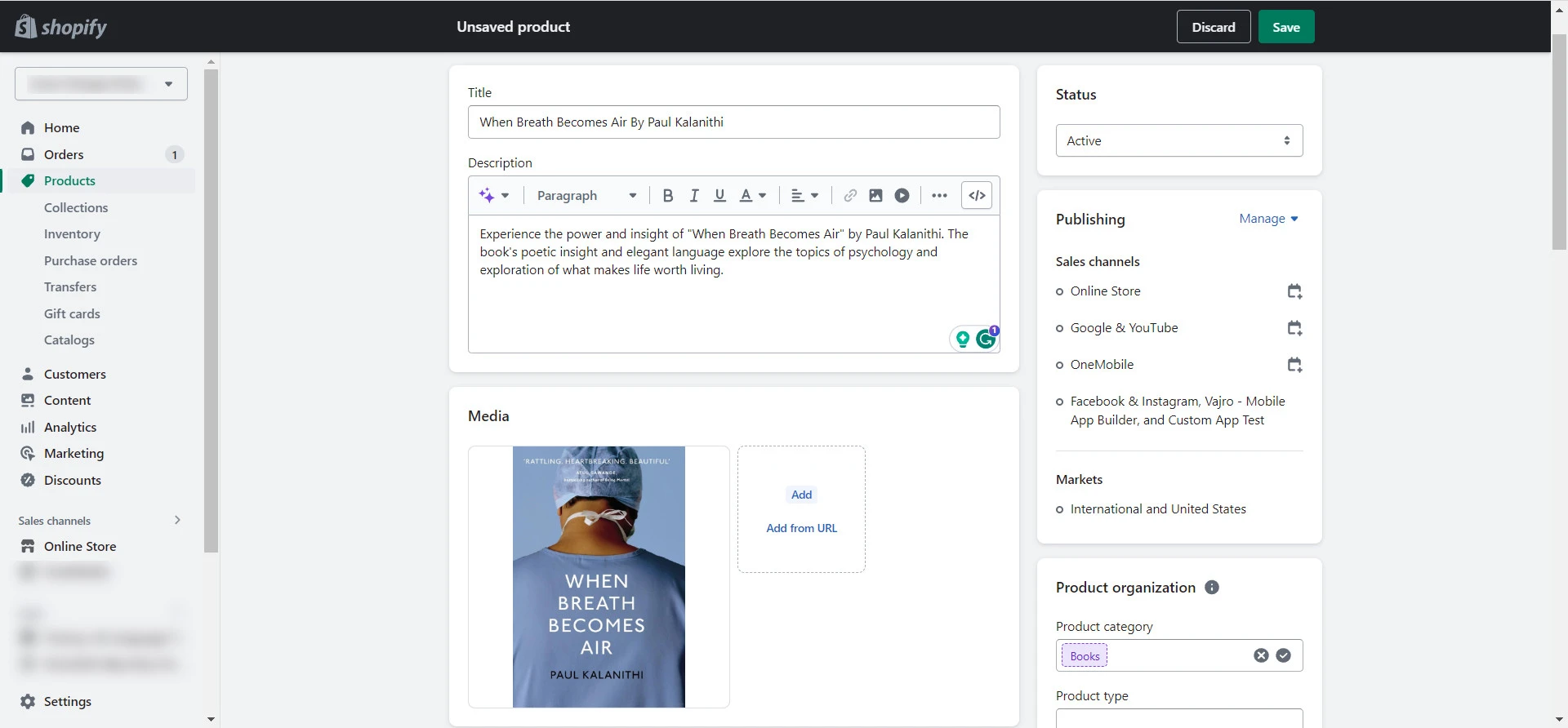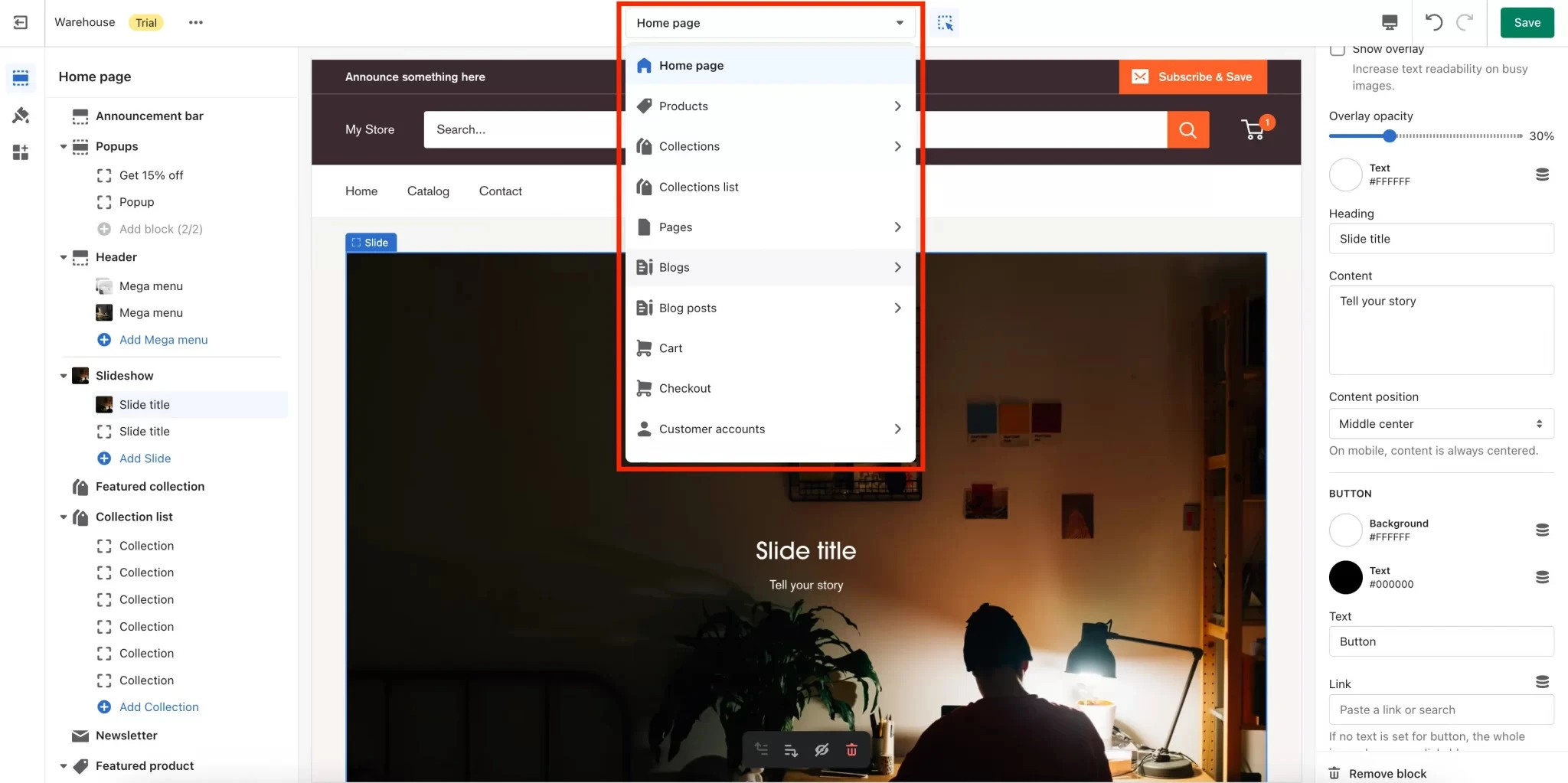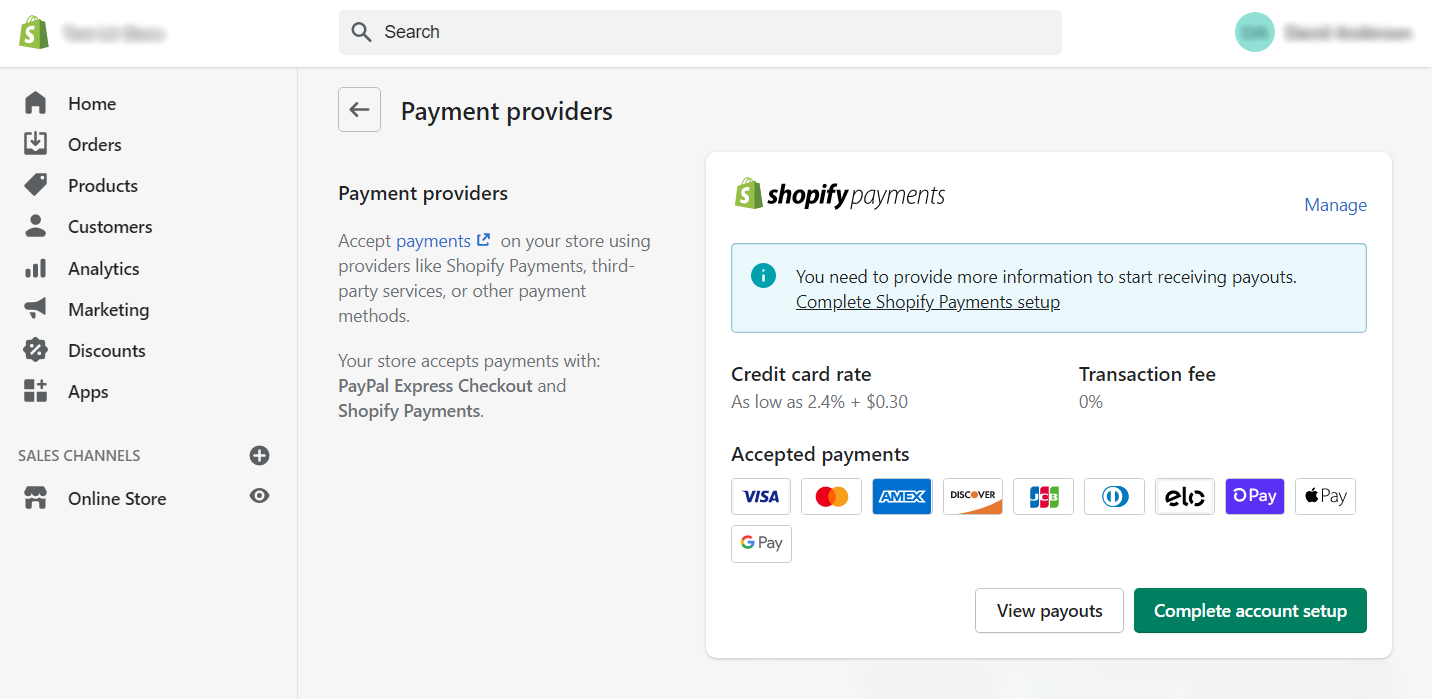Want to sell books on Shopify but don’t know where to start? Don’t worry because, in this article, we will give you a detailed guide on how to sell paper books on Shopify properly:
- Step 1: Pick your niche
- Step 2: Decide on your business model
- Step 3: Get your branding kits
- Step 4: Set up your Shopify store
- Step 5: Configure your payment gateways
- Step 6: Promote your Shopify bookstore
Let’s explore the breakdown of each step!
How To Sell Books On Shopify In 6 Steps?
Step #1: Pick your niche
Choosing the right niche is a crucial step in your journey to sell books on Shopify. By specializing in a specific niche, you can effectively target a passionate audience, differentiate yourself from competitors, and increase your chances of success.
Here are some tips to help you choose a niche that resonates with your target audience:
- Identify your target audience: Consider who your ideal customers are. Are they avid readers of a particular genre, enthusiasts of a specific topic, or professionals seeking knowledge in a specialized field?
- Research market demand: Explore popular book categories and genres to gauge the level of demand. Use tools like Google Trends, Amazon Best Sellers, or Goodreads to identify trending topics and genres.

3. Analyze competition: Assess the competitive landscape within your potential niches. Look at other Shopify stores, marketplaces, and social media platforms to understand what’s already available and how to differentiate yourself.
4. Consider your expertise and interests: Choose a niche that aligns with your expertise, interests, and passion. Your knowledge and enthusiasm will shine through in your marketing efforts and connect you with like-minded readers.
5. Evaluate profitability: While passion is essential, also consider the potential profitability of your chosen niche. Look at pricing trends, demand volume, and the willingness of customers to invest in books within that niche.
Step #2: Find suppliers
As you sell books on Shopify, finding reliable suppliers is a crucial step to ensure a steady inventory of quality titles.
Here’s a guide to help you discover trustworthy book suppliers if you don’t know where to find books to sell on Shopify:
1. Amazon:
Amazon is a splendid choice if you want to use Shopify to sell books published on Amazon KDP. If you wonder how to sell Amazon books on Shopify, you can use Amazon’s seller services to source books directly from third-party sellers. Alternatively, you can consider leveraging Amazon’s fulfillment program (FBA) to sell your books on Shopify and fulfill through Amazon.
2. Book distributors:
Connect with reputable book distributors like Ingram and Baker & Taylor. These distributors work directly with publishers and offer a wide range of titles, ensuring you have access to diverse genres and bestsellers.
3. Local bookstores:
Establish relationships with local independent bookstores or used bookshops. They can be valuable suppliers, providing you with unique titles and potential partnerships.
4. Wholesale book suppliers:
Explore wholesale book suppliers like Book Depot, who offer discounted prices on bulk purchases, making it ideal for building a robust inventory at competitive rates.
5. Trade shows and conventions:
Attend book trade shows and conventions, such as BookExpo or regional book fairs. These events provide opportunities to network with publishers, distributors, and other industry professionals, allowing you to forge valuable connections and discover new suppliers.
Remember to negotiate favorable terms, such as competitive pricing, flexible payment options, and reliable shipping. By diversifying your sources and establishing strong supplier relationships, you can ensure a consistent supply of high-quality books for your Shopify store, setting the stage for success in the book-selling business.
Step #3: Get your branding kits
As you embark on the journey of selling books on Shopify, one crucial step is to prepare your branding kit. This kit serves as the visual identity of your business and helps establish a strong and recognizable presence in the competitive market.
Start by creating a compelling logo that captures the essence of your book-selling business. Consider elements such as fonts, colors, and imagery that align with your brand’s personality and target audience.
Additionally, design a captivating book cover template that enticingly showcases your books, enticing potential customers to explore further. Remember to maintain consistency across all your branding materials, including social media graphics, email templates, and packaging design.
By crafting a cohesive and visually appealing branding kit, you’ll attract customers and create a sense of professionalism and trust. So invest the time and effort in curating a branding kit that reflects your unique business and entices book lovers to engage with your offerings.
For instance, here is the flat cut of LitExtension’s branding assets:

Step #4: Set up your Shopify store
Now that you have your branding kit and know what kinds of books you will sell, let’s create a Shopify store now to use Shopify at $1/month for the first three months.
Add products
After signing up for your Shopify account, the next thing to do to sell books on Shopify is to add your products.
On your admin dashboard, navigate to Products.
Herein, you can choose to Add product button on the top right corner and start adding each of your books individually.

Otherwise, you can choose Import and bulk upload your book products onto Shopify under the CSV file.
💡Pro Tip: Did you know you can sync products from marketplaces like Amazon, Etsy, etc, to your Shopify store with the help of third-party apps? (we’ll discuss this below).
[wptb id=62352]
Customize your store’s theme
Now that you have added your products, the next thing to do is to customize your Shopify store theme using the branding kit from Step 3.
However, you’ll have to pick your theme first before customizing it. So, here are some helpful articles to help you do so:
- 30 Best Shopify Themes – Have You Got One?
- Free Shopify Themes: 9 Latest Shopify Free Themes Review
After picking your preferred theme to customize it, you’ll need to add your logo and a favicon to your Shopify store. Afterward, you can easily customize your Shopify theme with Shopify’s drag-and-drop editor. This includes a homepage, product page, about us page, etc.

And if you want more customizations than what your current Shopify theme supports, you can check out these 8 best Shopify page builders to level up your visual storefront.
Step #5: Configure your payment gateways
With high-quality product data and a well-curated theme that builds around it, your Shopify store is almost good to go. However, there’s still work to do – configure your Shopify payments.
Here is a complete guide on how to do so:
- Step 1: Decide your store currency by going to Settings → General → Store currency. Choose the currency carefully, as it will impact your product prices and sales reports.
- Step 2: In your store’s settings, navigate to the Payments section. Under Settings, click “Payments: Enable and manage your store’s payment providers.”
- Step 3: Choose Shopify Payments as your payment provider. In the Accept credit cards section, select Shopify Payments, which offers competitive rates and supports various payment methods. Click on “Complete account setup” and provide the necessary information.

- Step 4: Complete the account setup by providing details such as business, personal, product, customer billing, and banking information. Read and accept the terms and conditions before clicking “Complete account setup.“
Step #6: Promote your Shopify bookstore
Now that everything clicks into place, the final step is to promote your Shopify bookstore! From our experience, here are some methods that will work magic on your Shopify store:
- Social media marketing:
Consider running a social media contest where participants can win a popular book by sharing their favorite reading spot and tagging your store.
- Influencer collaborations:
Partner with influential book bloggers, authors, or book Instagrammers to promote your store and recommend your books to their followers.
- Content marketing:
Start a blog or produce video content that provides value to book lovers, such as book reviews, reading guides, or author spotlights For instance, you can publish a blog post titled “10 Must-Read Books of the Year” and share it across social media platforms.
- Email marketing:
Send personalized emails to subscribers with book recommendations based on their reading preferences or previous purchases.
- Collaborate with local book clubs or libraries:
Sponsor book club events or host author signings to engage with the local community and increase brand visibility. For example, you’d love to offer a book club discount or host a virtual author Q&A session with a famous local writer.
- Search engine optimization (SEO):
Optimize your website with relevant keywords, meta tags, and descriptions to improve visibility in search engine results.
- Paid advertising:
Utilize platforms like Google Ads or Facebook Ads to target book enthusiasts and drive traffic to your store.
- Cross-promotion with related businesses:
Collaborate with other businesses in the literary industry, such as publishing companies or book-related subscription boxes, to cross-promote each other’s products. You can consider investing in a project management software for individuals to keep track of your collaborations and marketing efforts.
[wptb id=62350]
Sell Books On Shopify: FAQs
[sp_easyaccordion id=”62347″]
Wrapping Up!
All in all, selling books on Shopify can be profitable. And LitExtension – #1 Shopping Cart Migration Expert hopes after reading this article, you can know how to sell books on Shopify properly and make good money doing it.
Visit LitExtension’s blog and join our Facebook Community for all the updated insights on eCommerce trends, tips, and tricks.